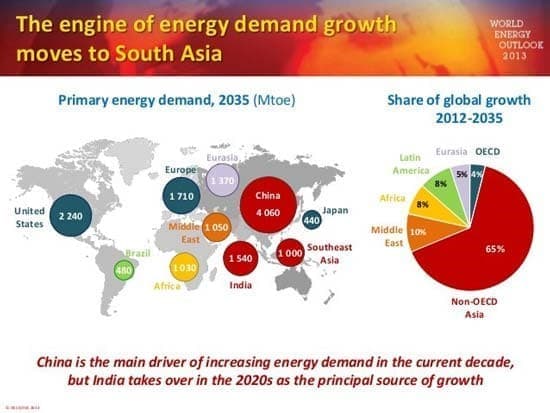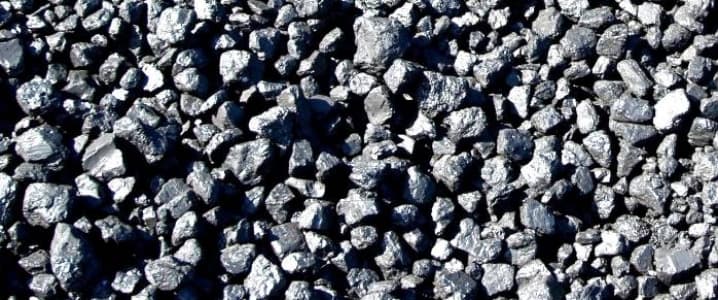Thanks to Mother Nature and administrative decision-making, China’s drive to reduce the use of coal has hit a roadblock.
You see, China entered 2017 aggressively trying to reduce coal capacity. The state-run Xinhua News even said last November that China was on track to cut its total number of mines to 7,000 by 2018.
But despite having a wealth of different energy sources – from (undeveloped) natural gas and oil to renewable sources like wind and solar – China remains dependent upon coal for most of its power generation and heat. To keep up with expanding demand from an expanding population, China on average is bringing a new coal-fired energy plant on line every week.
Compounding the situation, this week, Beijing announced a reduction in overall production from some of the larger national coal mines.
China’s move to wean itself off of its dependence on coal is important.
It’s a testament to the country’s commitment to fixing its deteriorating environmental conditions.
Sadly, it turns out that the drive is easier to announce than to pursue…
Why China Is Stuck Between a Rock and a Hard Place
Yesterday, domestic thermal coal prices hit record highs as a major cold snap grips northern China. In classic “treat the symptom not the disease” fashion, Beijing responded by having major state providers cut their spot prices for coal. Related: Saudis Unmoved By Oil Price Surge
Of course, that merely papers over the real problem. And that problem is about to get worse.
Coal miners will be cutting production for much of next month as the nation observes the protracted Chinese New Year. During the at least two-week period, most mining employees will be on holiday.
Coal imports have been increasing to offset the shortfall – a development that, at the moment, is primarily benefitting providers in Australia and other Asian countries such as Indonesia.
However, stockpiles are declining… with available volume at ports and utilities remaining at multi-year lows. This results from an inefficient national coal infrastructure and delivery system. Based on local production and transport (itself already a problem in several areas), the entire system suffers accelerating shortcomings when it must rely upon imported coal.
Tight supplies will continue with both the calendar and the weather exacerbating the pricing. China may still rely upon centralized administrative edicts. Yet there is now a genuine market forming with its own dynamics and expectations.
Once again, this becomes decisive when we acknowledge the strong trend toward Asia dictating energy usage moving forward. If anything, this is intensifying, putting an additional premium on what sourcing must be used to meet that rising energy need.

(Click to enlarge)
Source of Basic Data: IEA, 2017
As the chart above indicates, we may be focusing on China and India, which will soon overtake China as the No. 1 country in increasing energy use, but the real concern is much broader.
This is already a continent-wide problem.
In fact, Asian countries other than the dominant two will be posting higher demand increases over the next two decades.
That brings us back to the coal dilemma.
Only this time, what is hitting China today will be expanding to a wider region in short order.
Absent a contraction of population and a radical cut in energy use, the coal problem is going to be spreading.
Here’s why …
Why Coal Will Remain a Crucial Part of the Global “Energy Balance”
Consider this chart below, which breaks down the different energy types by global demand…

(Click to enlarge)
Source of Basic Data: ASIDA, Inc, 2017
ADVERTISEMENT
Primarily driven by Asian demand, coal will continue to be a major component in the “energy balance” at least through 2040.
An absolute rise in coal usage will occur over the next seven years.
And while a reduction will occur extending beyond that (at least according to current estimates), more than two decades from now coal will still be a top three global sources of energy.
But it will also remain the leading source in Asia.
Several moves are afoot to increase the application of renewables on Asia. Some regions, after all, seem well fit to provide substantially increased solar and wind power. Related: Will This Cause An Oil Price Reversal?
Unfortunately, while renewables will lead in the percentage of new use moving forward, all of my analysis points to one inescapable conclusion…
Asian demand over the next several decades will rise faster than the local power generation from both solar and wind. Other renewable sources like biomass and some geothermal, along with increasing nuclear sourcing and a slow injection of shale gas, may add to the mix.
Additionally, introductions of more efficient networks of generation and distribution, along with smart grid applications, may also marginally influence overall demand levels.
But the inescapable conclusion remains: Asia will remain a coal dependent continent.
And that means what has hit China over the past few weeks is not an outlier. It is a harbinger of things to come.
By Dr. Kent Moors
More Top Reads From Oilprice.com:
- The No.1 Challenge To The Oil Rally
- New Breakthrough Boosts Solar Fuel Efficiency
- Largest Oil Consumers Not In A Rush To Hedge Crude


















